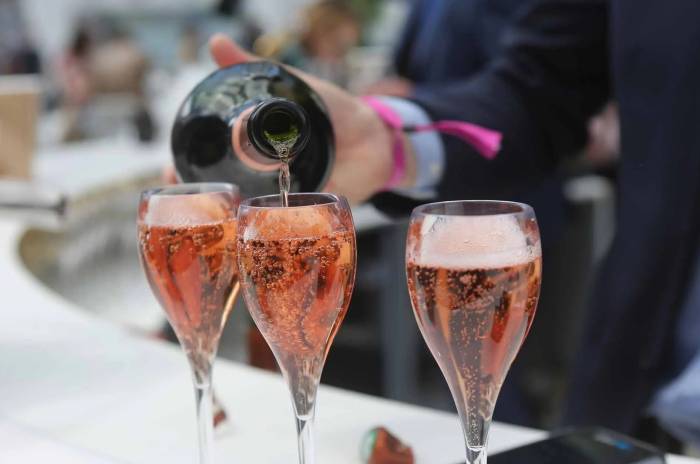Champagne sales decline in the UK as private labels and rosé varieties gain market share
Traditional brands see losses while consumers shift to private label and rosé Champagne for special occasions, data shows
2025-05-27

Champagne shipments to the United Kingdom have declined in both volume and value in 2024, according to new data from the Comité Interprofessionnel du Vin de Champagne (CIVC) and Nielsen. Total shipments dropped 5.7% in volume, falling from 25.54 million bottles in 2023 to 22.31 million bottles this year. The value of these shipments also decreased by 12.7%, from €550.31 million to €518.73 million.
The top 12 international Champagne brands accounted for 43.6% of the UK’s total Champagne imports, representing about 9.73 million bottles. Nielsen’s analysis of the off-trade market for the twelve months ending December 28, 2024, shows a market decline of 1% in volume and 1.6% in value. Major brands, including Moët & Chandon—the market leader—experienced losses, with Moët & Chandon down 5.9% in volume and 4.6% in value.
Private label Champagnes, however, saw significant growth. Volume sales increased by 13.4% in 2024, giving private labels just over a quarter of the off-trade market by volume at 26.6%. In value terms, private labels held a 19.2% share, up by 11.4%. Among the fourteen brands tracked by Nielsen, only Taittinger (up 5%), Nicolas Feuillatte (up 4.6%), Pol Roger (up 11%), and Bollinger (up a notable 32.6%) showed volume growth in 2024. Aldi’s Nicolas De Montbart brand nearly doubled its sales, growing by 98.2% and capturing a 4.3% market share.
These same brands, along with private labels, were also the only ones to see value growth during this period. Pol Roger was unique in achieving value growth that slightly outpaced its volume growth (+11.2% vs +11%).
Despite these pockets of growth, the overall off-trade Champagne market monitored by Nielsen continued its downward trend, dropping to 1.05 million nine-liter cases in 2024 from 1.22 million cases two years earlier.
Early figures from 2025 suggest a shift in consumer behavior, particularly regarding rosé Champagne. In the year to April 19, the value of ‘white’ Champagne sales rose by 8%, while rosé Champagne saw an even stronger increase of 11%. This period included both Valentine’s Day and Mother’s Day—key occasions for sparkling wine purchases—during which rosé Champagne accounted for 15% of sales by value.
White Champagne’s volume growth was slightly ahead of its value growth at +11%, resulting in an average bottle price of £25.21 compared to £25.95 during the same period last year. Rosé Champagne required less discounting; its volume grew by 10%, but value grew faster, pushing the average bottle price up from £37.52 to £37.92.
Champagne as a category outperformed other sparkling wines during this period, despite sparkling wine being four times larger by value and more than fourteen times larger by volume in the UK market. Sparkling wine as a whole saw only a modest value increase of 4%. This suggests that consumers are choosing rosé Champagne for special occasions over other sparkling options.
English sparkling wine remains a much smaller segment but posted strong gains: up 17% in volume and 15% in value for the year to April 20, 2025. The average price for pink English sparkling wine rose from £26.54 to £27.48 per bottle compared with early last year, while white English sparkling wine prices dipped slightly from £25.44 to £24.77.
The data points to changing preferences among UK consumers, with rosé Champagne gaining ground for celebratory moments and private label offerings increasing their presence on retail shelves amid an overall decline in traditional brand performance and total Champagne consumption.
Founded in 2007, Vinetur® is a registered trademark of VGSC S.L. with a long history in the wine industry.
VGSC, S.L. with VAT number B70255591 is a spanish company legally registered in the Commercial Register of the city of Santiago de Compostela, with registration number: Bulletin 181, Reference 356049 in Volume 13, Page 107, Section 6, Sheet 45028, Entry 2.
Email: [email protected]
Headquarters and offices located in Vilagarcia de Arousa, Spain.